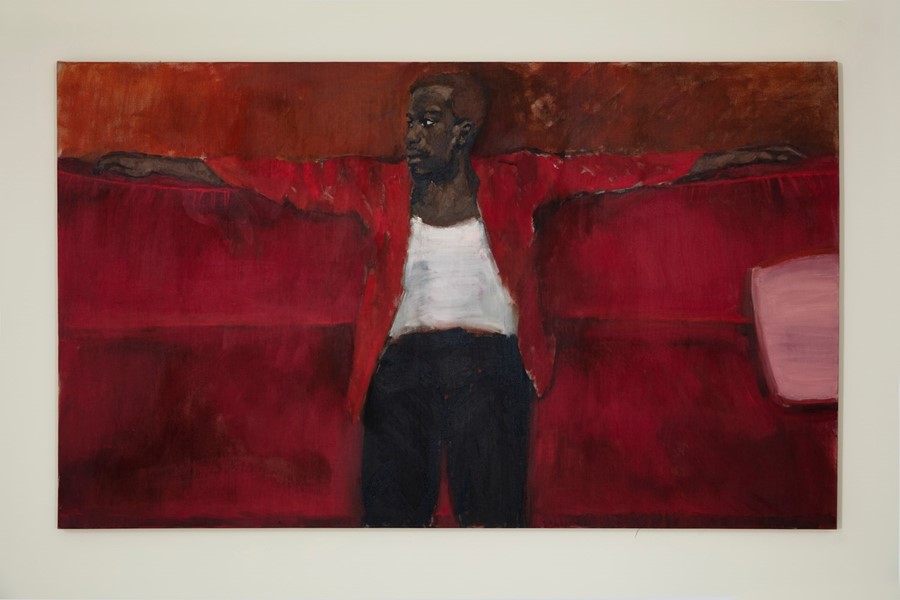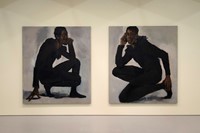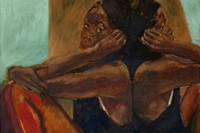In the first instalment of her new column, curator Antonia Marsh considers the paintings of British-Ghanaian artist Lynette Yiadom-Boakye
In her new monthly column for AnOthermag.com, curator and director of Soft Opening, Antonia Marsh, considers the work of one contemporary artist.
I pause at the cigarette. Out of the corner of my eye a column of smoke twists upwards, barely there, barely painted, so delicately transient that if it wasn’t for the glowing white cylinder of tobacco beneath it, I might miss its graceful unfurling forever.
At Lynette Yiadom-Boakye’s recent solo exhibition In Lieu of a Louder Love in New York, over 30 new paintings stretched across both Jack Shainman spaces in Chelsea. In Coagulant Dangers (2018), the interaction that this smoke that so enthralled me communicates – an expression of relaxation, an inhalation followed by its outward companion – seems to perfectly exemplify the mood of the artist’s unforgettable oils. The hand which holds this cigarette belongs to a figure sitting on the floor at the base of a green sofa. The figure’s cheek rests on his opposite hand, with his head turned casually to face a friend, himself stretched across the cushions and leaning on an elbow to light his own cigarette in another gentle puff of smoke. So intimate in its absolute normality, this moment where two individuals take time to pause or reflect, repeats across the show.
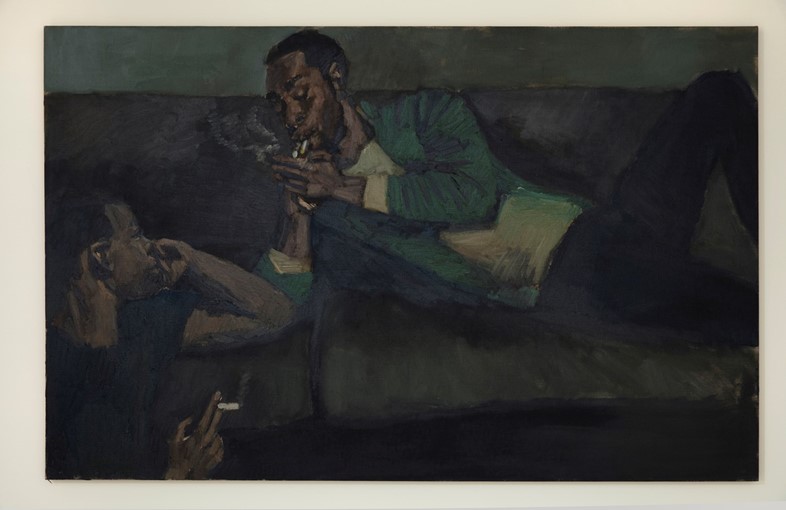
Figures in varying states of pose or repose fill Yiadom-Boakye’s canvases, just larger than life-size. Sometimes they engage with the viewer, others focus on some external thought, as British novelist Zadie Smith describes in her New Yorker article of June 19, 2017, “They sit, stretch, lounge, stand, and are often lost in contemplation, their eyes averted”. This exhale, this relieving sigh of rest or relaxation permeates the hectic Manhattan energy found outside the galleries with the only depicted movement constituting a stretch, a scratch, a reach towards a glass or a slow turn of the head.
All hung characteristically low, submerging but not overwhelming the viewer, Yiadom-Boakye’s paintings seem traditional in their composition and consideration of scale. Her brushwork easily reveals a satisfyingly loose attention to line that discloses the quickness with which she paints. This speed must so closely rely on instinct, to afford each work a tangible energy, a freshness that enables you to feel the artist in her paintings, feel her through her expressive brushwork and sudden amassments of texture as she considers the language of painting itself.
Yiadom-Boakye explores how colours interact and ignite her figures with a new radiance, even while set among a body of work that sustains her characteristically muted palette. Flickering from within the gaps that delineate figures and furniture, peeking between skin and clothing or beneath stripes on T-shirts, glinting slithers of pure, bright colour – a newer development for the artist. Golden light falls onto a seated girl in Southbound Catechism (2018) and a single green eye glints and follows you around the room in Closer to a Comfort (2018), while a chorus of red, orange and pink collide in The Ventricular (2018).
Familiar as they appear, each painted individual is drawn not from life or direct experience, but from imagination. These paintings of fictional characters do not qualify as portraits, existing outside any specific time or place and void of any historicising clothing or context. By releasing her imagination onto the viewer, the artist gives us permission to initiate this most childlike of mental activities ourselves, dreaming up pasts and futures for each of her figures. Yiadom-Boakye describes her compositions as “suggestions of people... They don’t share our concerns or anxieties. They are somewhere else altogether” (New York Times Magazine, 2010).
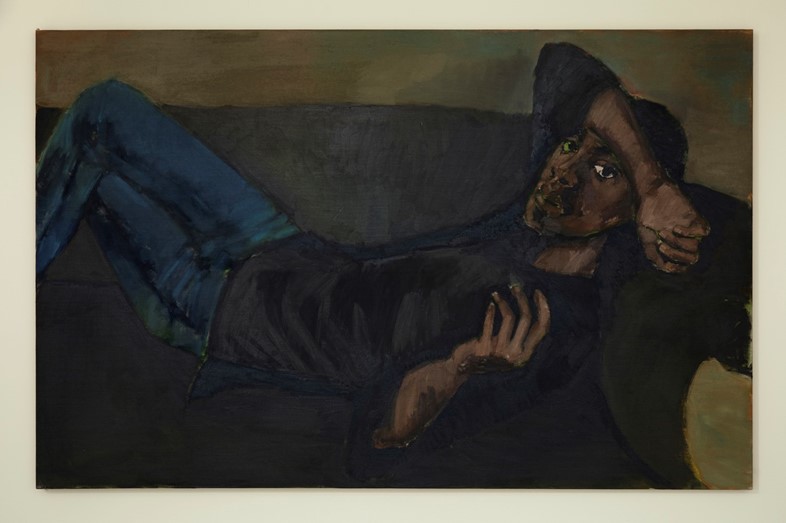
As Smith has asserted, to paint the psychological complexities of fictional individuals with such familiarity feels comparable to character studies more often found in literature. In an interview with Hans Ulrich Obrist on the occasion of her 2015 solo exhibition Verses After Dusk at the Serpentine Gallery in London, Yiadom-Boakye recounts that when she was young, she spent considerable time reading Toni Morrison, Howard Jacobson, Patricia Highsmith, Chaucer, Shakespeare and James Baldwin among others. This concern with the written word continues for the artist; writing consistently alongside her artistic practice, Yiadom-Boakye maintains that she paints what she cannot write and writes what she cannot paint.
The accompanying text to In Lieu of a Louder Love opens with a poem of the same title. In its four short stanzas, the poem oscillates between statements of intimacy and of spirituality that exude a mood of quiet contemplation, not dissimilar to that found in a room of her paintings. As if poetry has unburdened the painter from the need to effect a conclusive proposition, Yiadom-Boakye generously reminds her audience – much like her figures smoking their cigarettes – to pause.
